LABORgLAskAtALOg LABORATORY GLASSWARE CATALOGUE
LABORgLAskAtALOg LABORATORY GLASSWARE CATALOGUE
LABORgLAskAtALOg LABORATORY GLASSWARE CATALOGUE
Erfolgreiche ePaper selbst erstellen
Machen Sie aus Ihren PDF Publikationen ein blätterbares Flipbook mit unserer einzigartigen Google optimierten e-Paper Software.
TECHNICAL INFORMATION | PRODUCT SECTION<br />
TECHNICAL INFORMATION | PRODUCT SECTION<br />
Laboratory glassware and plastics<br />
Cleaning laboratory glassware<br />
Plastics used with laboratory glass 1<br />
To complement DURAN ® laboratory glassware products, various plastic products such as screw caps<br />
are available. Their properties are listed in the following table.<br />
1<br />
The details in the table relating to temperature resistance<br />
relate to standard autoclaving processes with steam and<br />
a duration of 20 minutes (see page 213, sterilisation).<br />
Temperature resistance<br />
range °C<br />
EPDM Ethylene/propylene-diene-rubber -45 to +150<br />
ETFE<br />
Partially crystalline ethylene/tetraflouroethylene<br />
-100 to +180<br />
copolymer<br />
FEP Tetra-Fluor-Ethylen/Hexafluor-Propylene -200 to +200<br />
FKM Fluorinated rubber -20 to +200<br />
PBT 2 Polybutylenterephthalat -45 to +180<br />
PE Polyethylene -40 to +80<br />
POM Polyoxymethylene -40 to +90<br />
PP Polypropylene -40 to +140<br />
PTFE Polytetrafluorethylene -200 to +260<br />
PU 3 Polyurethane -30 to +135<br />
TpCh260 Thermoplastic/duroplastic -196 to +260<br />
VMQ Silicone rubber -50 to +200<br />
PSU Compound Compound polyarylsulfone based -45 to +180<br />
2<br />
Changes in colour may occur if exposed to temperatures<br />
above 180 °C.<br />
3<br />
All laboratory glasses coated with PU may only be cleaned<br />
while moist in order to avoid any electrostatic charge which<br />
may form.<br />
Special glass laboratory apparatus can be washed by hand in a soaking bath or by machine in a lab<br />
washer. Laboratory dealers can supply a wide range of detergents and cleaner-disinfectants for both<br />
methods. As contamination during the delivery of our laboratory glassware cannot be totally ruled<br />
out, we recommend washing laboratory glassware before it is used for the first time. To care properly<br />
for laboratory glassware, it should be washed immediately after use at low temperature, on a short<br />
cycle and with low alkalinity. Laboratory apparatus that has come into contact with infectious substances<br />
or microorganisms should be treated in accordance with the current guidelines. Dependent on the<br />
substance, autoclaving (e.g. to kill microorganisms) may be necessary prior to cleaning, but it is<br />
generally recommended that cleaning or washing of glass products be carried out prior to autoclaving<br />
or hot-air sterilisation. This prevents dirt or impurities from adhering to the glassware surfaces and<br />
prevent damage caused by any possibly adhering chemicals.<br />
Manual cleaning<br />
The generally recognized method is to wipe and rub the glass with a cloth or sponge soaked in cleaning<br />
solution. Abrasive cleaners and abrasive sponges should not be used on laboratory glassware as these<br />
can damage the surface of the glass. Surface damage can affect the glass properties and limit further<br />
use of the product. When soaking glassware it should generally be left in the cleaning solution for 20<br />
to 30 minutes at room temperature, then rinsed with tap water followed by distilled water. To clean<br />
the glass as gently as possible, and thus extend its service life, a prolonged soaking time and higher<br />
temperature should only be used for stubborn soiling. Laboratory glassware should not be soaked for<br />
long periods in strongly alkaline media at more than 70 °C since this can have an adverse effect on<br />
the ceramic printing and may cause glass corrosion. Also to be avoided is severe mechanical action,<br />
e.g. scraping using a metal spoon.<br />
Classes of substances<br />
+20 °C<br />
PE<br />
PP<br />
PBT<br />
Chemical resistance of plastics<br />
PTFE/ FEP<br />
TpCh260<br />
Alcohols, aliphatic + + + + + + + + + + + + + + – + + +<br />
Aldehydes + + + + + + + + + + + + + +<br />
Alkaline solutions + + + + + + + + + + + – + + + + – + + +<br />
Esters + + + + + + + + + – + + + – – +<br />
Ethers – – + + + + + + + – – + – + +<br />
Hydrocarbons,<br />
– + + + + + ++ + + – + + + + + + + +<br />
aliphatic<br />
Hydrocarbons,<br />
– + + + + + + + + – + + + + + + –<br />
aromatic<br />
Hydrocarbons,<br />
– + + + + + + + – + – + + + –<br />
halogenated<br />
Ketones + + + + + + + + – + + + – + –<br />
Acids, dilute or weak + + + + + + + + + + + – + + + + + + – + +<br />
Acids, conc. or strong + + + + + + + + + – + + + + + – + +<br />
Acids, oxidising – + – + + + + + – – + + – +<br />
+ + = very good resistance<br />
+ = good to limited resistance<br />
– = low resistance<br />
ETFE<br />
VMQ<br />
EPDM<br />
PU<br />
FKM<br />
POM<br />
PSU Compound<br />
Washer-disinfectors for automatic laboratory glassware reprocessing<br />
Washer-disinfectors for automatic laboratory glassware preparation are available in various sizes<br />
and performance classes. The product range extends from compact machines of 60 to 90 cm width<br />
up to powerful, large capacity machines. The large capacity machines are specially intended for central<br />
reprocessing of large quantities of laboratory glassware and are available as both 1-door and 2-door<br />
barrier machines for installation in a diaphragm wall.<br />
60 cm wide compact machine<br />
Performance/load: e.g. 37 narrow neck glasses, 96 pipettes<br />
115 cm wide large capacity machine<br />
Performance/load: e.g. 232 narrow neck glasses, 232 pipettes<br />
208<br />
209



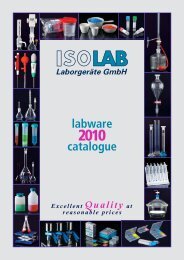
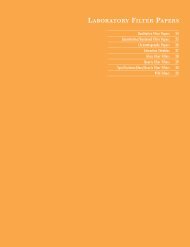
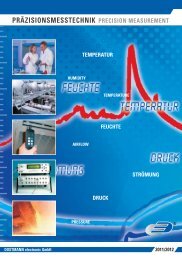
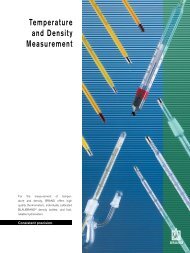


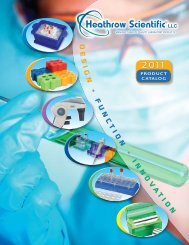


![Download [12.5MB] - Labtek](https://img.yumpu.com/24756492/1/184x260/download-125mb-labtek.jpg?quality=85)
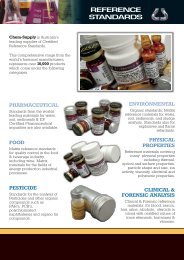
![DYMO Healthcare Brochure [2MB] - Labtek](https://img.yumpu.com/24756484/1/190x240/dymo-healthcare-brochure-2mb-labtek.jpg?quality=85)
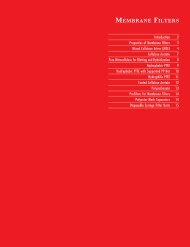
![Download [12.5MB] - Labtek](https://img.yumpu.com/24756470/1/184x260/download-125mb-labtek.jpg?quality=85)